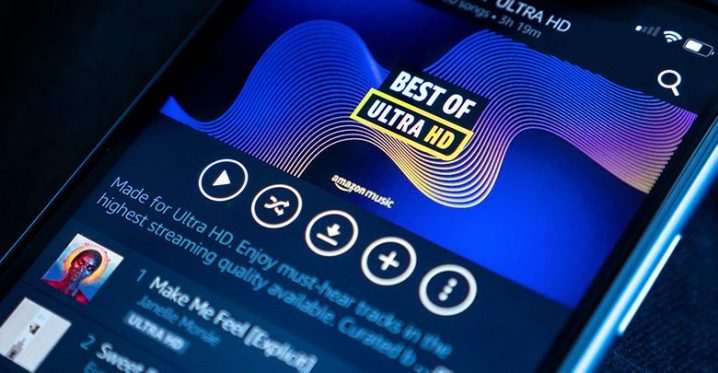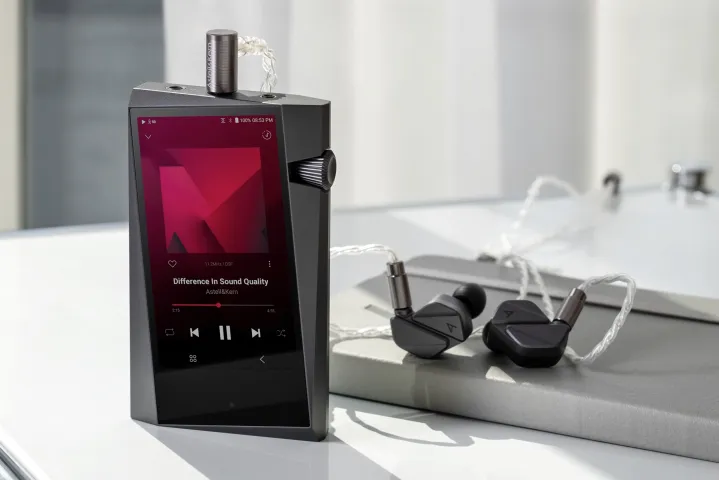If you’ve only experienced audio fidelity through CDs, MP3s, or lower-quality streaming services like Spotify and YouTube Music, you might be missing out on some incredible sound quality. Hi-res audio, also known as high-resolution or HD audio, offers a whole new world of better sound. This digital audio format provides higher sound quality than standard MP3 files and CDs, with higher bit depth and sample rates that capture a more accurate representation of the original sound.
To fully appreciate hi-res audio, you’ll need compatible equipment such as a high-resolution audio player, a digital-to-analog converter (DAC), and high-quality headphones or speakers. Many modern smartphones, digital audio players, and computers support high-res audio playback.
Major streaming services like Apple Music, Amazon Music, Tidal, and Qobuz now offer a wide selection of high-resolution audio tracks, giving listeners access to high-quality audio without the need for physical media or large downloads.
Hi-res audio can provide a more immersive listening experience with greater detail, dynamics, and depth compared to standard audio formats. The overall sound quality can also be influenced by the recording quality, playback equipment, and individual preferences.
What does the term ‘hi-res audio’ mean?
Hi-res audio refers to digital audio formats that exceed the resolution of CD audio. These formats offer higher bit-depths and sample rates, elevating the audio quality beyond traditional CDs. For example, Apple Music provides hi-res audio in 24-bit with sample rates ranging from 48kHz to 192kHz.
If you want to dive deeper into hi-res audio or learn what you need to listen to it, continue reading for more details.
A brief history of hi-res audio
While the term might seem new, hi-res audio has been around for over two decades. Initially popularized by Super Audio CD (SACD) and DVD-Audio formats in 2000, these formats struggled due to the need for expensive players and limited differences in audio quality compared to CDs.
Why didn’t hi-res audio catch on?
Challenges like large file sizes and the rise of the MP3 format led to the dominance of compressed audio formats, despite the benefits of hi-res audio. However, the resurgence of interest in audio quality by artists and enthusiasts eventually paved the way for the reemergence of hi-res audio.
The rebirth of hi-res

Music industry icons like Neil Young played a significant role in reviving interest in hi-res audio through initiatives like the PonoPlayer. Despite challenges, the concept of hi-res audio gained momentum, leading to broader industry support and the availability of hi-res audio products from various manufacturers.
What’s the difference between lossless and hi-res audio?
Lossless audio preserves the original audio information without compression, making it ideal for hi-res audio sources like SACD or DVD-Audio. Formats like FLAC, ALAC, and others are commonly used for lossless audio.
It’s essential to differentiate between high-quality lossless audio and CD-quality lossless audio when exploring hi-res audio options.
Are all hi-res audio tracks the same quality?
Not all hi-res audio tracks offer the same quality, as there are varying levels of resolution available. Common formats range from 24-bit/96kHz to even higher bit-depths and sample rates like 32-bit/384kHz.
What do I need to listen to hi-res audio?
Accessing hi-res audio requires a source of hi-res music and compatible playback devices. Streaming services like Apple Music and Amazon Music offer high-resolution tracks, while online stores provide downloadable hi-res files. It’s important to ensure your equipment supports hi-res audio playback for the best experience.
Sources of hi-res audio

Subscribing to streaming services or purchasing high-resolution tracks from online stores are common ways to access hi-res audio. Vinyl enthusiasts can also convert their records to high-resolution audio files, although the difference may be minimal.
Devices that can play hi-res audio

Choosing a device that supports hi-res audio playback, including digital audio players, speakers, and DACs, is crucial for enjoying high-quality sound. Ensure your equipment is compatible with the level of hi-res encoding you prefer.
Hi-res-rated headphones
For an optimal hi-res audio experience, look for headphones or speakers that can reproduce frequencies up to 40kHz. Wireless headphones with USB-C support allow for high-resolution sound without the need for additional DAC/amp.
Going wireless

Wireless headphones can deliver high-resolution audio using Bluetooth codecs like LDAC, aptX Adaptive, and LHDC. Pairing these headphones with a compatible device ensures quality wireless hi-res audio playback.
Is there really such a thing as ‘better-than-CD’ quality?

The discussion around hi-res audio quality revolves around higher bit-depths and sample rates, offering benefits like increased dynamic range and extended frequency capture. While the debate continues, many listeners appreciate the improved sound quality when transitioning from lower-quality formats to high-quality lossless audio.


